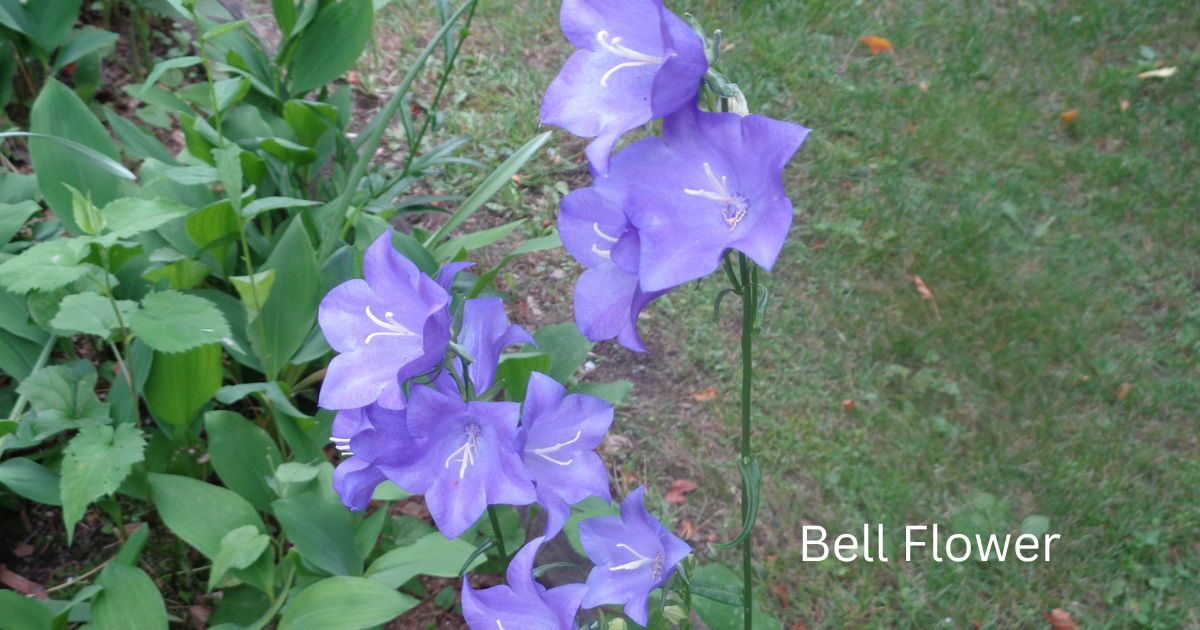Campanula, affectionately known as the bell flower, stands out in the gardening world with its enchanting forms and colors. These plants offer a range of varieties, from petite, ground-hugging types to tall, striking species reaching impressive heights. You’ll find them flaunting colors like soothing blues, radiant whites, and soft pinks.
Every garden enthusiast loves Campanula for their lush foliage and unique bell-shaped flowers. These blooms add a whimsical touch to gardens, often creating a magical vibe that makes outdoor spaces feel extra special. It’s a plant that dances between elegance and charm, making it a must-have for those who adore aesthetic appeal in their gardens.
Campanula’s perennial nature is a big win for any gardener. These plants bloom year after year, reducing the hassle of replanting each season. If you’re looking for reliability and beauty, this is definitely your go-to plant.
A little word on spreading – yes, some types of Campanula can spread! This means a luscious, full display if managed well, but remember to keep an eye on them if space is a concern. With thoughtful care, they fill landscapes beautifully without taking over unless left unchecked.
Optimal Growing Conditions for Flourishing Campanula Plants
Campanula blooms best when they get just the right amount of sun each day. A good mix of sunlight and some shade keeps these flowers blooming happily. If you’re in a hotter climate, try giving them a bit of afternoon shade to prevent them from getting too toasty.
The soil is like a cozy bed for Campanula, so it needs to be just right. We’re talking well-draining, slightly alkaline soil that’s rich in organic matter. If you’re dealing with heavy clay, a little work is needed to amend it with some good compost or sand to make it Campanula-friendly.
While it’s important to keep the soil moist, be careful not to overwater, as that can lead to root rot. A deep drink of water once a week usually does the trick, but pay attention to how quickly the soil dries out, especially during a heatwave.
Picking the right spot for your Campanula isn’t just about looks. Consider factors like protection from harsh winds which can actually be quite unfriendly to these delicate blooms. They thrive best when they have a calm, serene environment to spread their wings.
Campanula isn’t too fussy, but these conditions will give them the best start. They’ll thank you with vibrant blooms and healthy growth all season long.

Cultivating and Maintaining Vibrant Campanula Bell Flowers
Starting fresh with Campanula is pretty straightforward, and you’ve got a few options. You can start them from seeds indoors a couple of months before the last frost or wait for nursery-grown plants if you prefer instant gratification. For the seed route, once those seedlings get a few leaves, they’re ready to find their home in the garden.
Timing your planting is crucial. Aim for springtime when the soil has started to warm. This ensures your Campanula has the best chance to settle in and grow strong before the heat of summer hits.
Deadheading is a smart habit to get into with these flowers. Removing spent blooms encourages the plant to focus on new growth, giving you an extended show of blossoms, which is always a win in the garden scene.
Pests aren’t usually a big problem for Campanula, but do keep an eye out for slugs and snails in particular. A bit of nighttime patrolling can help keep these critters at bay. If diseases like powdery mildew show up, good air circulation and avoiding overhead watering can help keep things under control.
Finally, if you’re looking to expand your Campanula family, try dividing the plants every few years. It not only helps manage the size of your flowerbeds but also gives you more blooms to spread around, share with friends, or plant throughout your garden.
